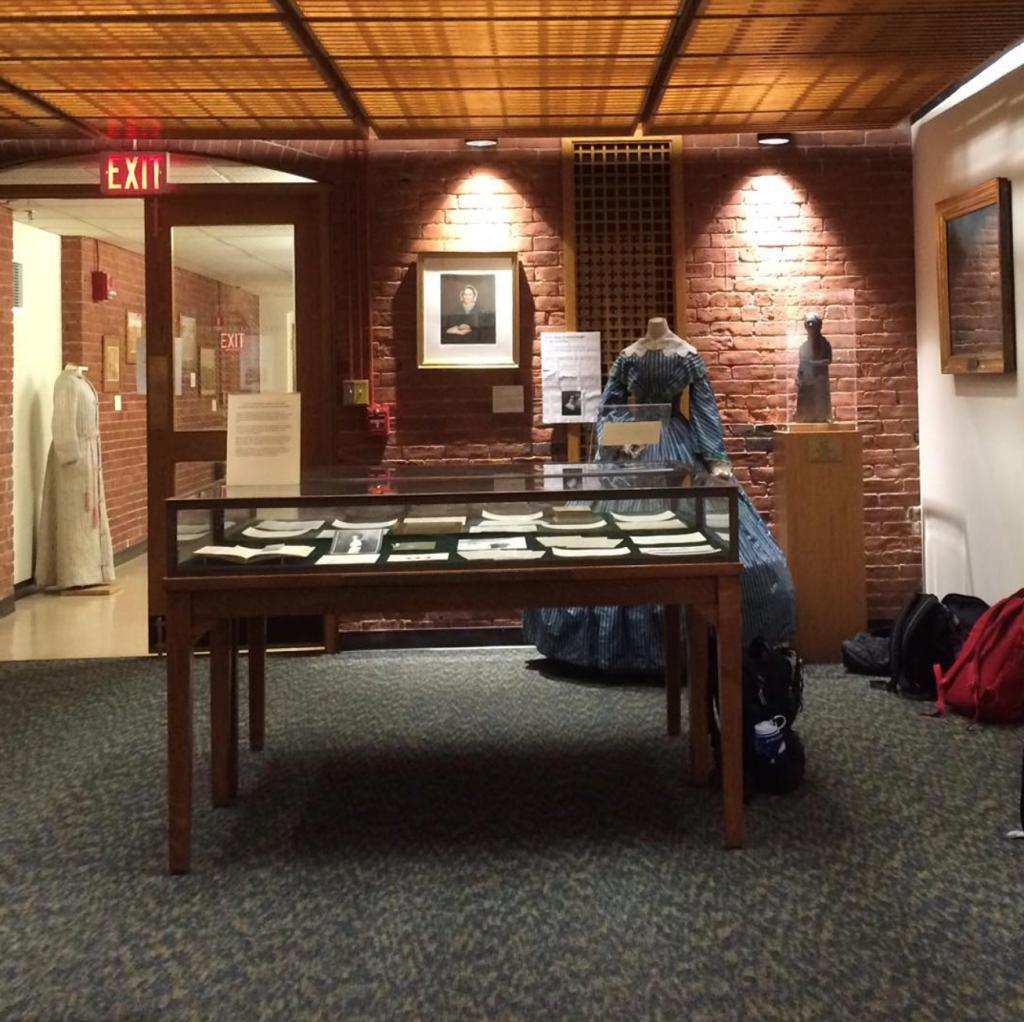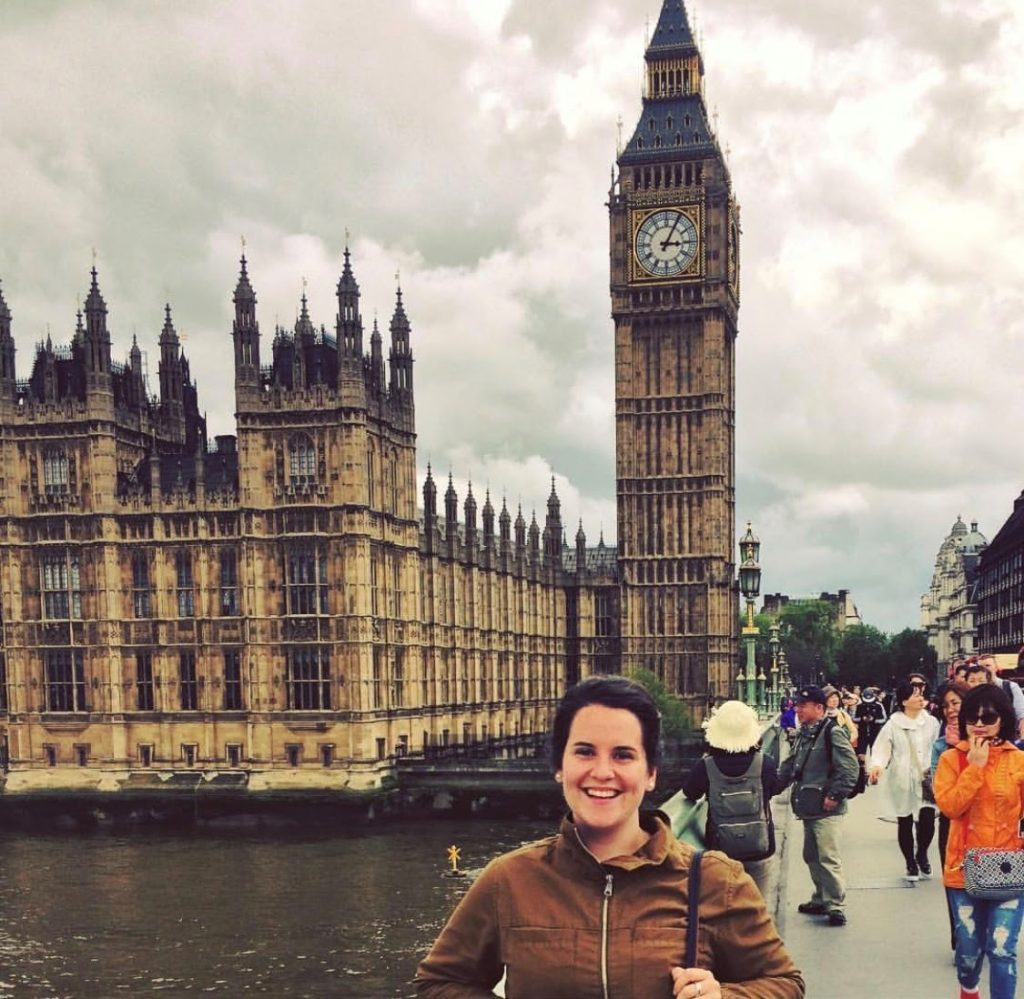I was once entirely intimidated by working in archives and with special collections.
Yes, it’s true! A lot of this anxiety came from my preconceived notions about what goes on in these spaces and collections. For example, the whole concept of special and rare. Just hearing those words made me feel I would be a burden and make a mess. When I thought of working with special collections and archival material, I dreamed up visions of pencils and white gloves, no beverages, sub zero temperatures, and perpetual shushing. Special and rare meant exclusionary and breakable. Fortunately, this apprehension has not only subsided, but has since been entirely replaced by an overwhelming enthusiasm for archives and special collections. I owe this metamorphosis entirely to Sharon Byrd and DebbieLee Landi of the Archives, Special Collections, and Community department at the Library. I’d like to share this experience to help others shed their apprehension and expand their intellectual (and often entertaining) experiences.

My past experiences with archives began as an undergraduate at Mount Holyoke College, a women’s college in Western Massachusetts. Also founded in 1837, the college has an extensively documented and rich history. Underneath one of the oldest buildings on campus was this hobbit house of a space. Round windows with light, long wooden tables, and smiling people! Who knew?! I had a special introduction to working with archival materials that may be familiar to a few readers: crafternoon! The head archivist led afternoon activities with themed crafts throughout the semester. My favorite was by far creating postcards from copies of old photographs, course catalogs, and other campus publications. Participating in these crafternoons helped me feel part of the community and the history of the college. While in graduate school at UNC’s School of Information and Library Science, I met many future archivists. Often in awe of their dedication, I found their program of study to be demanding. The Archives and Records Management track was rigorous and precise. They had to follow a specific course sequence to prepare them for their field. I got to dabble in all the arts of library science. (Yes, there was a class in the art of a good book recommendation!)
During a summer seminar in London, I met future archivists from other institutions. They could barely contain their excitement during one afternoon excursion to the Metropolitan Archives of London. Yes, they hold records for the entire city and its history. Some of the special collections librarians there set up a special room of materials for us to peruse. Sitting on a folding table was the census for the city of London in 1092. Yep, just sitting there! We could touch it! It was probably a foot high and I remember an interesting odor… This experience on a spring afternoon in London fueled those feelings of wonder and awe that can only come from those special things that once intimidated me.

Sharon and DebbieLee have since secured my now positive associations with Archives and Special Collections. We worked as a team to seize a unique opportunity. We opened the Rare Book Room to an ANT 101 course last spring. Some students had visited before, but for many others it was their first time in the RBR as we fondly call it. We created a session that introduced anthropological research methods through the resources at the library. Then, we gave students a hands-on experience unpacking a mystery from campus history. Just like archaeologists (a branch of anthropology), they handled objects found under an old building on campus. They got to share what they examined: a toothbrush, a piece of porcelain from a doll’s face, even bones! What could have been a point and click database demonstration became an interactive, exploratory session.
Librarians and archivists love to share what we do in the classroom. I wrote a lesson plan that outlined what we did as a submission to one of my favorite series instruction “cookbooks” from the American College and Research Libraries branch of the American Libraries Association. There was a call for “recipes” for the Teaching in Archives and Special Collections Cookbook edition. While our submission was not accepted, I still view our collaboration as successful. I’m grateful that I get to work with such inspiring and open minded colleagues. Sharon and DebbieLee demonstrate how archives and special collections are for everyone, white gloves optional.
Hensley, Merinda, et al. “Analyzing Archival Intelligence: A Collaboration Between Library Instruction and Archives.” Communications in Information Literacy, vol. 8, no. 1, July 2014,
doi:10.15760/comminfolit.2014.8.1.155.
Mhcarchives. “‘Day in the Library Life’
Challenge image from the Archives Desk,” Instagram, 3 Nov. 2015.
www.instagram.com/p/9pPYj7sxhj/
Other images is author’s own.

Speak Your Mind